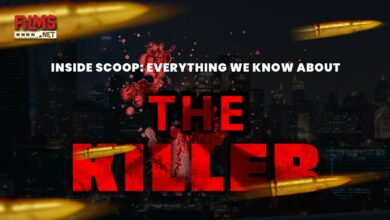“Taxi Driver”: A Cinematic Exploration of Isolation and Societal Decay.

Taxi Driver
In Martin Scorsese’s 1976 film, “Taxi Driver,” the central character, Travis Bickle, is a deeply isolated man who becomes increasingly disconnected from society. The film explores the themes of isolation and societal decay through Bickle’s eyes as he descends into a spiral of violence and despair. As Bickle’s world crumbles around him, he becomes increasingly detached from reality until he finally snaps. Moreover, “Taxi Driver” is a powerful cinematic exploration of the dark side of human nature and the destructive potential of isolation and loneliness.
Themes of Isolation and Societal Decay in
The film “Taxi Driver” is a cinematic exploration of isolation and societal decay. The film follows the story of Travis Bickle, a mentally unstable Vietnam War veteran who becomes a taxi driver in New York City. As he descends into madness, Travis becomes obsessed with saving a young prostitute named Iris from her life of prostitution.
The themes of isolation and societal decay are evident throughout the film. Travis is an isolated individual who is unable to connect with other people. Furthermore, he is paranoid and isolates himself from society. The decline of society is also evident in the film. New York City is presented as a dirty and dangerous place where crime is rampant. Plus, prostitution and drug use are commonplace, and the city seems to be decaying around Travis.
Cinematic Techniques Used to Explore Isolation and Societal Decay
Moreover, throughout history, artists have used their work to explore the human condition, and cinema is no different. “Taxi Driver” is a perfect example of a film that uses various cinematic techniques to explore the themes of isolation and societal decay.
The film follows the story of Travis Bickle, a taxi driver in New York City who becomes increasingly isolated and obsessed with violence as he struggles to make sense of the world around him. Additionally, director Martin Scorsese uses several techniques to convey these themes, including long takes, close-ups, and voice-over narration.
Moreover, long takes are often used in “Taxi Driver” to emphasize Travis’s isolation. We see him driving through the city for long periods, with little interaction with other people. Plus, it emphasizes his feeling of disconnection from society.
Furthermore, close-ups are used throughout the film to show Travis’s deteriorating mental state. As his isolation increases, we see more and more close-ups of his face, which conveys his increasing paranoia and desperation.
However, voice-over narration is used extensively in “Taxi Driver” to provide insight into Travis’s thoughts and feelings. Plus, it allows us to understand his motivations and how he views the world around him.
Using these cinematic techniques, Scorsese can effectively explore the themes of isolation and societal decay in “Taxi Driver.”
Main Body
Additionally, when exploring the film “Taxi Driver,” it is important to consider the themes of isolation and societal decay. The film’s protagonist, Travis Bickle, is a taxi driver in New York City who is increasingly becoming isolated from society. The isolation results from his mental state and job, which keeps him away from other people. As Travis becomes more isolated, he becomes more fixated on cleansing society of its corruption. Plus, it leads him to commit several violent acts throughout the film, furthering his isolation.
Furthermore, the theme of societal decay is also present in “Taxi Driver.” New York City is shown to be a place where crime and prostitution are rampant. Travis’ increasing isolation from society leads him to believe that he is the only one who can save it from itself. Plus, it ultimately leads to his downfall, as he cannot distinguish between right and wrong.
However, “Taxi Driver” is an important film that explores isolation and societal decay. These themes are also relevant today and offer insight into the human condition.
Cinematography
Furthermore, the cinematography is the art of filmmaking, one of the most important aspects of any film. Moreover, the film shoot is done in a visual style. However, the film is shot and edited and profoundly affects the viewers’ experience. In “Taxi Driver,” director Martin Scorsese uses cinematography to create an immersive and intimate portrait of isolation and societal decay.
Additionally, the film’s protagonist, Travis Bickle, is a New York City taxi driver slowly descending into madness. Moreover, most of the film takes place at night, and Scorsese uses this to his advantage. Plus, the dark, neon-lit streets are oppressive and claustrophobic, closing in on Travis as he spirals further into isolation. Furthermore, this visual style amplifies the film’s themes, allowing viewers to better understand Travis’ mental state.
In addition to its use of darkness, “Taxi Driver” also features long takes and wide shots emphasizing the cityscape’s vastness. Moreover, these shots contrast sharply with the close-ups of Travis’ face used throughout the film. Plus, they remind us that Travis is just one person in a sea of humanity and that his story is ultimately universal.
Moreover, Scorsese’s masterful cinematography creates a powerful and unforgettable cinematic experience. Plus, it is an essential element of “Taxi Driver” that enhances our understanding of the character’s journey and helps us to
Sound
Furthermore, in “Taxi Driver,” isolation and societal decay are availed through the character of Travis Bickle. Bickle is a taxi driver in New York City who becomes increasingly isolated and disconnected from society. This isolation leads to his mental deterioration and eventual descent into violence.
However, the film’s sound design is critical in conveying Bickle’s increasing isolation. The film’s early scenes represent the set of the chaotic sounds of New York City, with horns honking, sirens wailing, and people shouting. This cacophony represents the overwhelming noise of the city that leads to Bickle’s isolation. As Bickle withdraws further into himself, the good design changes to reflect this, with long periods of silence punctuated by brief sound moments. This conveys Bickle’s emptiness and loneliness as he becomes more isolated from society.
However, the film’s final scenes are harrowing as Bickle descends into madness and violence. The sound design amplifies this dread with jarring sound effects and an unsettling score that creates a feeling of unease and fear. Plus, it underscores Bickle’s danger to himself and those around him, highlighting the destructive power of isolation and societal decay.
Acting
In “Taxi Driver,” director Martin Scorsese uses the character of Travis Bickle to explore Isolation and Societal Decay. Moreover, Bickle is a loner who lives in a seedy New York City apartment and works as a taxi driver. He becomes increasingly disturbed by the crime and corruption he sees around him, and his mental state deteriorates.
Furthermore, Scorsese uses different techniques to show Bickle’s isolation and mental state. The first is through the use of voice-over. Bickle narrates his thoughts in a monotone voice that conveys his feelings of detachment from the world around him. The second is through the use of close-ups. Scorsese often films Bickle in close-up, accentuating his haggard appearance and making him seem more menacing.
The third technique Scorsese uses is sound design. The film’s soundtrack is full of discordant noises that reflect the chaotic inner world of Bickle’s mind. This creates an unsettling atmosphere that further highlights Bickle’s isolation from society.
“Taxi Driver” is a powerful exploration of Isolation and Societal Decay. Through its use of different cinematic techniques, the film creates a convincing portrait of a man who has lost touch with reality and is slowly descending into madness.
Editing
Editing is a critical part of filmmaking, and Taxi Driver is no exception. The film’s editing is masterful, expertly weaving together isolation and societal decay scenes.
The opening scene is a perfect example of this. We see Travis alone in his apartment, watching television and drinking beer. The camera never leaves his face, giving us a sense of his isolation. It is a montage of quick cuts that show the seedy underside of New York City: prostitutes walking the streets, people doing drugs, etc. This juxtaposition of images creates a powerful mood of despair and desperation.
Throughout the film, the editing heightens the sense of Travis’ isolation and mental instability. For example, there are several scenes where he talks to himself in the mirror. The scenes of driving him at night nights show intercut, furthering our impression that he is a man who is completely cut off from society.
The final scene is a masterful piece of editing. It starts with Travis’ face, covered in blood, after killing Iris’ pimp and rescuing her from prostitution. The camera then cuts to a long shot of him walking down the street, surrounded by people but still completely alone.
This conveys the idea that even though he has taken violent action against the forces that have destroyed Iris’ life, he can’t save her (or himself) from the loneliness and isolation that consumes them both.
Themes of Isolation and Societal Decay in
The themes of isolation and societal decay show principal characters throughout the film “Taxi Driver.” They are explored through the character of Travis Bickle, who is a loner and outsider in society. The film portrays a decaying city full of violence, and Bickle feels isolated from the rest of humanity. He becomes obsessed with saving a young prostitute, Iris, from the filth and degradation of her life. Ultimately, Bickle fails to save Iris and kills her pimp and several other criminals. This highlights the hopelessness and emptiness of his existence.
The Character of Travis Bickle
Travis Bickle is the main character in the 1976 film Taxi Driver. He is a loner who struggles with insomnia and turns to drive a taxi to cope with his isolation. Bickle becomes increasingly disgusted with the filth and crime of New York City, and his mental state deteriorates as he descends into paranoia and nihilism. He begins to believe that violence is the only way to clean up the city, and he sets out on a mission to kill a senator who he believes is corrupt.
Despite his disturbing thoughts and actions, Bickle is presented as a sympathetic character. His loneliness and frustration are understandable, and his desire to make a difference in the world is admirable. However, his lack of empathy for others and his distorted view of reality make him dangerous. Ultimately, Bickle’s plan fails, and he descends further into madness, making him one of the cinema’s most tragic characters.
Visual Style of
The film’s visual style provides character through handheld cameras, natural lighting, and gritty, realistic locations. Moreover, this gives the film a feeling of immediacy and rawness that helps to underscore the themes of isolation and societal decay. The film’s editing style is also choppy and jarring, adding to unease and discomfort.
Conclusion
‘Taxi Driver’ is a harrowing film that offers a unique insight into an individual’s internal and external struggles in isolation. The film’s powerful symbolism and gritty realism explore themes of social detachment, mental illness, violence, and alienation to create an unforgettable cinematic experience. Through its bold visual style and uncompromising narrative, ‘Taxi Driver’ provides a thought-provoking exploration of societal decay as experienced by Travis Bickle – making it one of the most iconic films of all time.



